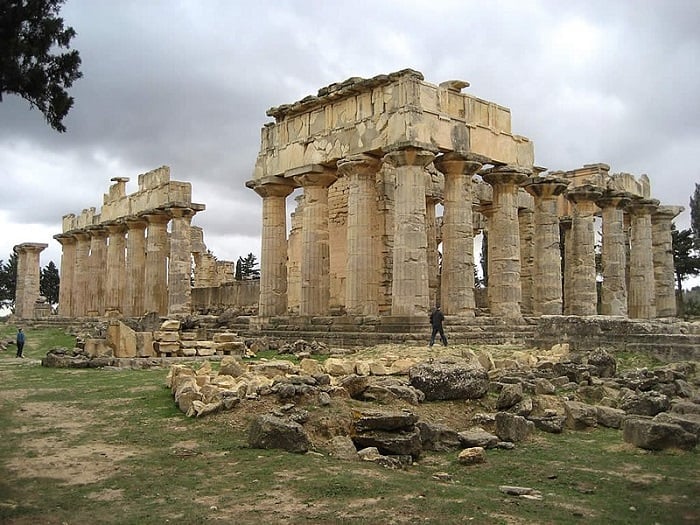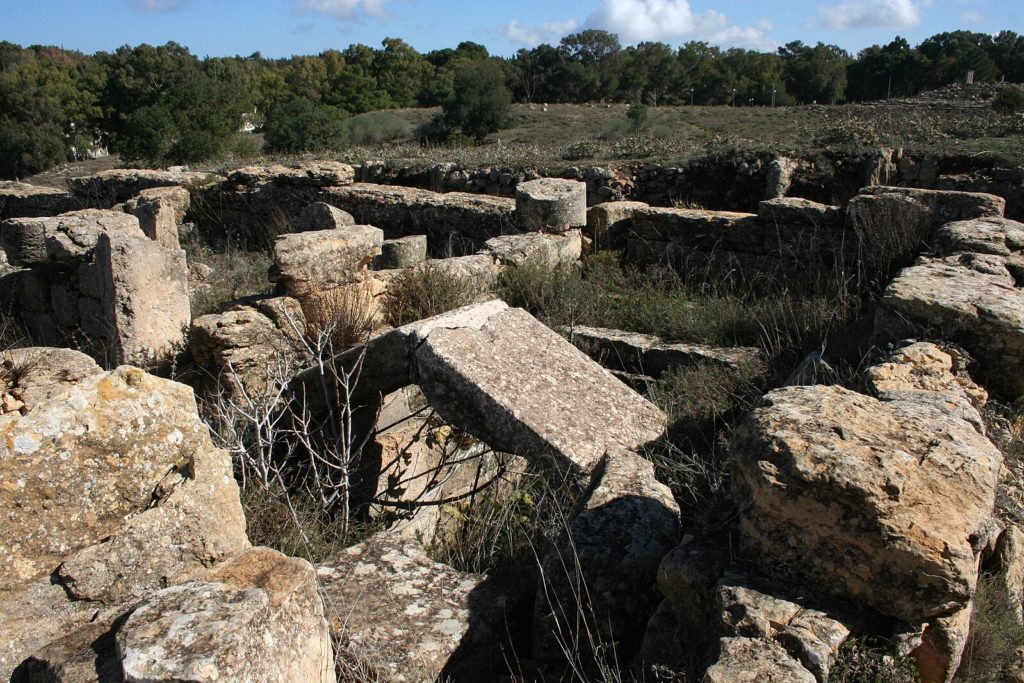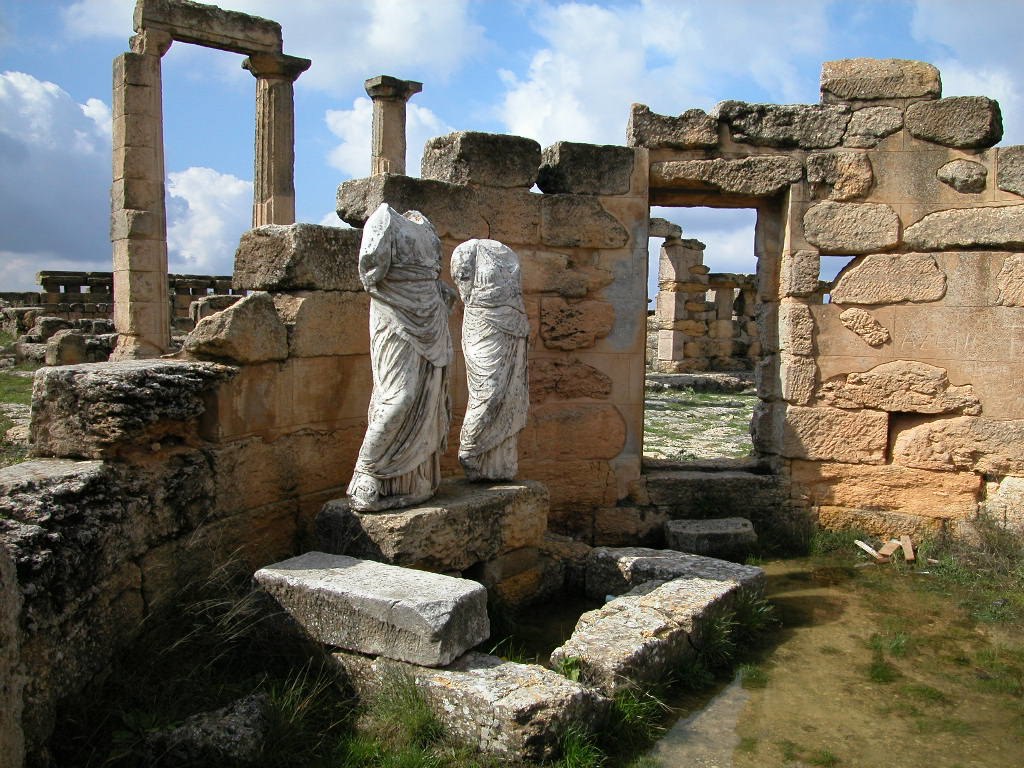
During the seventh century BC, the Greek world sought to explore and establish colonies throughout the Mediterranean coast. One of the rather earlier waves of Greek colonization took place in Libya. The tale of the Greeks in the region begins in 630 BC with a group of islanders from Thera, Santorini. They were led by Battos Aristoteles.
Battos, the Founder
The founder of Cyrene came from a hauntingly legendary ancestry. According to ancient Greek historian Herodotus, on his father’s side, he descended from one of Jason’s companions in the Argonautica, Euphemus. His maternal ancestry, on the other hand, included Fronime, daughter of one of the kings of Crete.

The First Trips to Libya
The tale of the founding of ancient Greek colonies in Libya is the subject of a dispute amongst both ancient and modern scholars. However, there are certain details of the Battos trip and motivations for setting out for Libya. Prior to the exploration, Santorini was in turmoil with hunger and civil unrest. As circumstances worsened, the oracle of Delphi urged him to establish Cyrene either independently or with the support of Thera‘s King Grinos.
Following the oracle’s orders, Battos and the Santorini Greeks traveled to Libya in search of the promised fertile land. As they did so, they searched but found no fertile land so decided to return. Upon seeing them return, the other citizens of the island stoned them and would not allow them to land.

Such a hostile reaction forced Battos’ sailors to request yet another prophetic riddle from the Pythia. The contents of the riddle remain unknown. However, his sailors went on another expedition yet again. On their second trip, they discovered the promised fertile land of Libya.
Interactions With Native Libyans
The original landing site of the Greeks was not the final destination nor the founding location of Cyrene. After a series of beneficial interactions and relations with the locals, they showed Battos’ sailors a more prosperous land that came to be known as Cyrene. The city was named after a spring that was thought to be dedicated to Apollo.

The group identified by most scholars as the ancient Libyans whom the Greeks encountered are the Berbers. They are of Amazigh descent, the native population of North Africa, and the civilization itself is first mentioned in ancient Egyptian sources as such.
The name Berber is derived from the Greek word Barbaros, which, in this case, refers to what was to the Greeks a “foreign” language. It is notable, however, that the ethnonym Berber came from the Romans despite its Greek origins. The Greeks actually referred to them as Libyans.
The Legacy of Cyrene and the Formation of the Cyrenaica
After a forty-year rule, Battos managed to leave a strong dynasty that ruled Cyrene and the surrounding Cyrenaica. Herodotus is our best source for the establishment of the Pentapolis as well as the domestic struggles within Cyrene. The Pentapolis was composed of Cyrene, Apollonia, Ptolemais, Taucheira, and Berenice. The founding of nearby cities came from both exploration purposes and domestic unrest.
An example of these themes is the story of Barke. The still-surviving city of Barke was founded in 560 BC by the great-grandsons of Battos after a sibling dispute. More specifically, three of the four brothers of Arcesilaus II “the Cruel” rebelled against him and created Barke. The cities of Apollonia and Taucheira, along with Berenice of the Pentapolis, were built throughout the seventh and sixth centuries.
Decline of the Therian Authority
The presence of the Persian Empire multiplied the hostility of relations among the imperial dynasty. About a hundred years after the founding of the colony, Battus IV became a client king of the Persian King Cambyses in exchange for protection and support from his family. It is important to make note of the expansion of the Persian Empire into Egypt during this time.

The Greek imperial authority of the Battiadai dynasty over Cyrenaica lasted about two centuries. The decline of the Therian Greek rule was marked by the rise of the Achaemenid Empire and local imperial conflicts. However, despite the change in ultimate authority, the cities survived and remained Greek under Persian rule.
During this era, Greek arts and philosophy flourished. Some of the renowned classical authors included Arete of Cyrene and Eugammon, author of “Telegony.” However, none were more famous than the hedonist Cyrenaic philosophy that was established in this era.
Ptolemaic Era and the Pentapolis
At the dusk of the fourth century, the imperial crown of Macedon under Phillip II and his son Alexander the Great led to the resurgence of Hellenism and Greek rule in the region. The conquest of Alexander the Great brought Cyrene and the Cyrenaica under Greek rule along with Egypt.
After Alexander’s death, the authorship of Cyrenaica came under the Ptolemaic dynasty with the center in Alexandria. The era was marked by a cultural re-awakening with more renowned classical authors such as Callimachus, Eratosthenes, and Theaetetus of Cyrene.

Under the Ptolemaic dynasty, Ptolemais, who was the last member of the classical Pentapolis, established the city, which was further built up under Ptolemy III Euergetes between 246 BC and 221 BC. Originally, it was a port used by the earlier Greek Therian kingdom.
Roman Cyrenaica
The Cyrenaica came under Roman control in 96 BC with Ptolemy Apian. Soon after, they were inducted by the Roman senate along with Crete as an eparchy. Under Roman control, the city was rearranged various times, yet it prospered. Christian theological and Neoplatonist thought survived.
In this era, various temples were erected to the Greek Pantheon by the Roman Greek-speaking residents. The city was also overrun by the Vandals for a brief period but was later reconquered by Belisarius. The eventual decline of Roman rule came with the emergence of Islam. In 642, the second caliph Omar conquered the city, which then remained under Muslim control for a thousand years.
Islamic Era of Cyrene
The Muslim eras saw the emergence of the Umayyads, Abbasids, Fatimids, and, later on, the Ottomans in the area. The integration of the region into the broader Islamic world also meant it was influenced by various cultural, intellectual, and religious currents emanating from other parts of the Muslim world.
Noteworthy is also the incorporation of the Greek cities into the Arabic world. Cyrene became Shahhat, Ptolemais became Tolmeita, and Berenice then became Benghazi. Furthermore, Apollonia became Susa, while Teuchira became Tocra.
Cyrene as Libya
This particular era lasted until the brief Italian colonization (1911-1951) in the early twentieth century. Following the Italian occupation, the kingdom of Libya emerged and remained intact until its dictatorial replacement by Gaddafi in 2007. Lastly, Gaddafi and his forces were defeated in 2011, and a democratic system was put in place.
See all the latest news from Greece and the world at Greekreporter.com. Contact our newsroom to report an update or send your story, photos and videos. Follow GR on Google News and subscribe here to our daily email!



